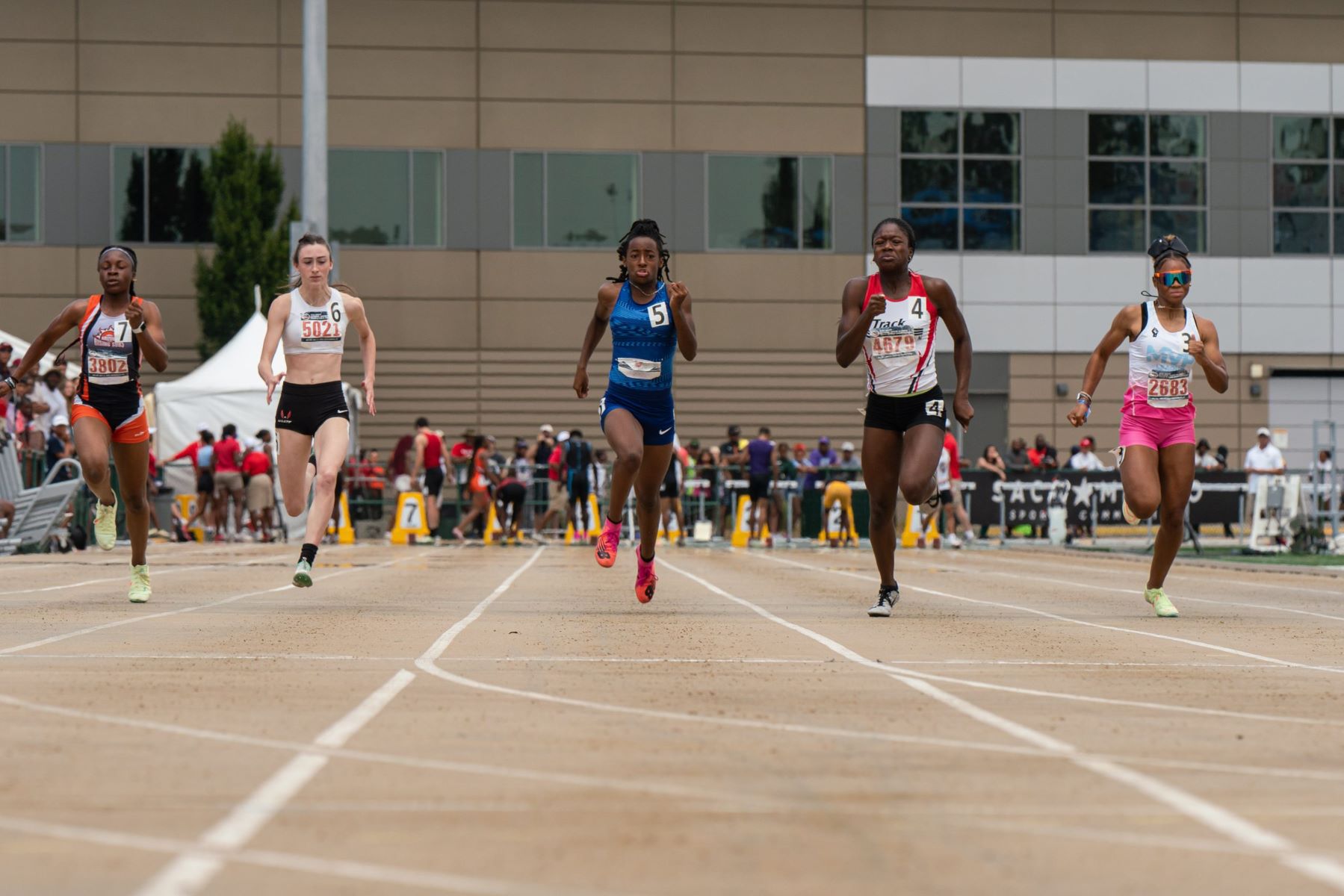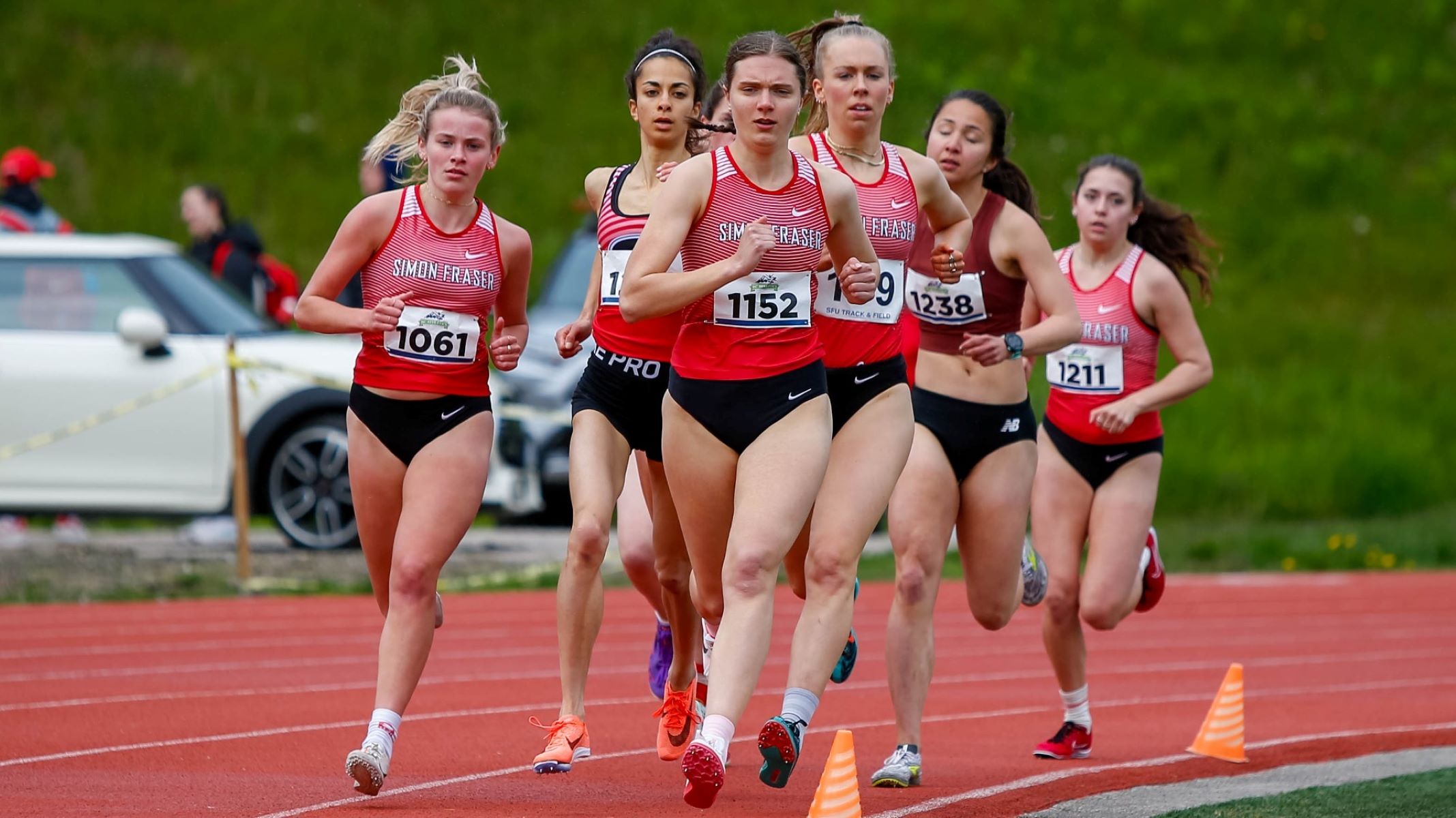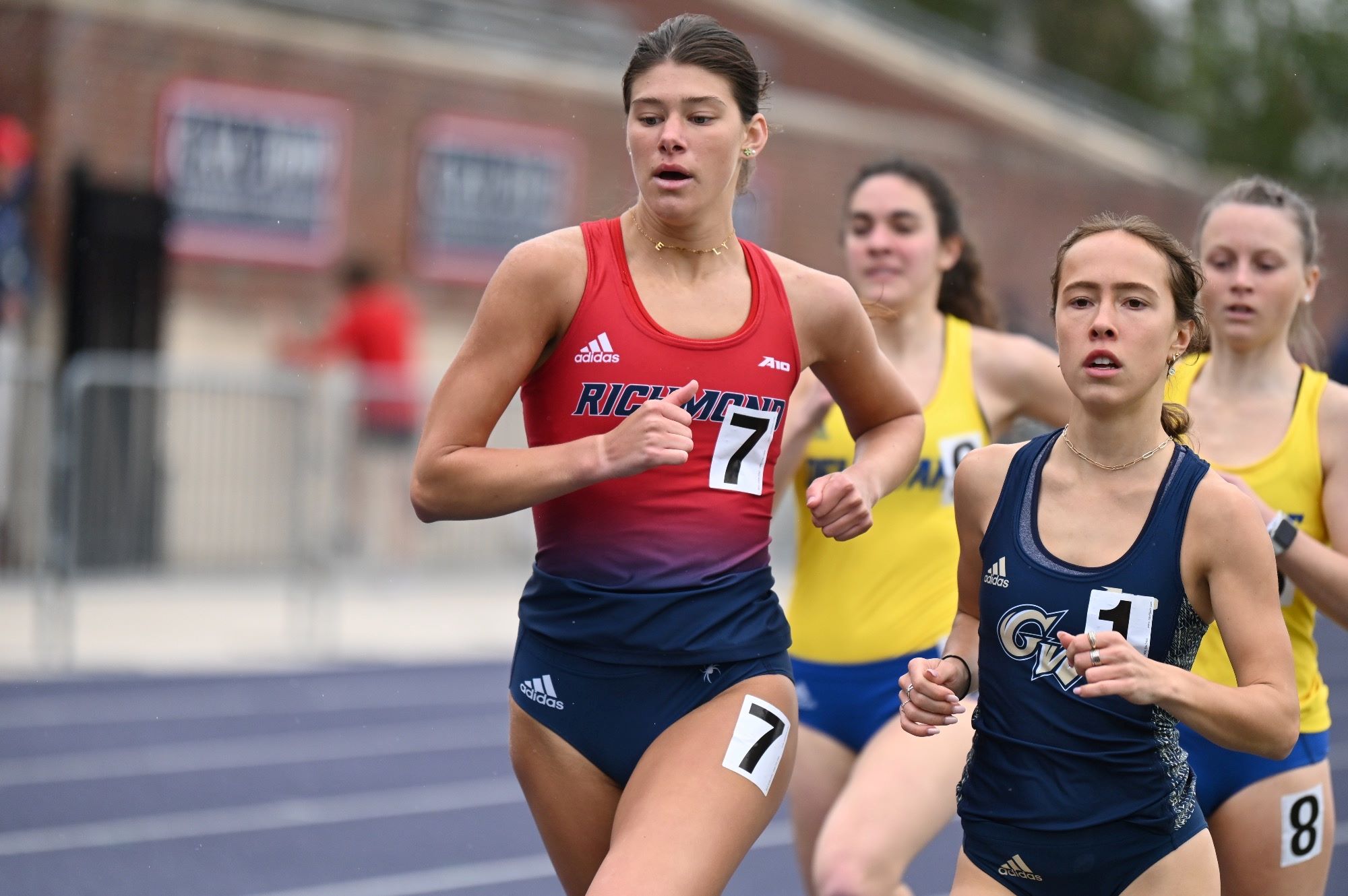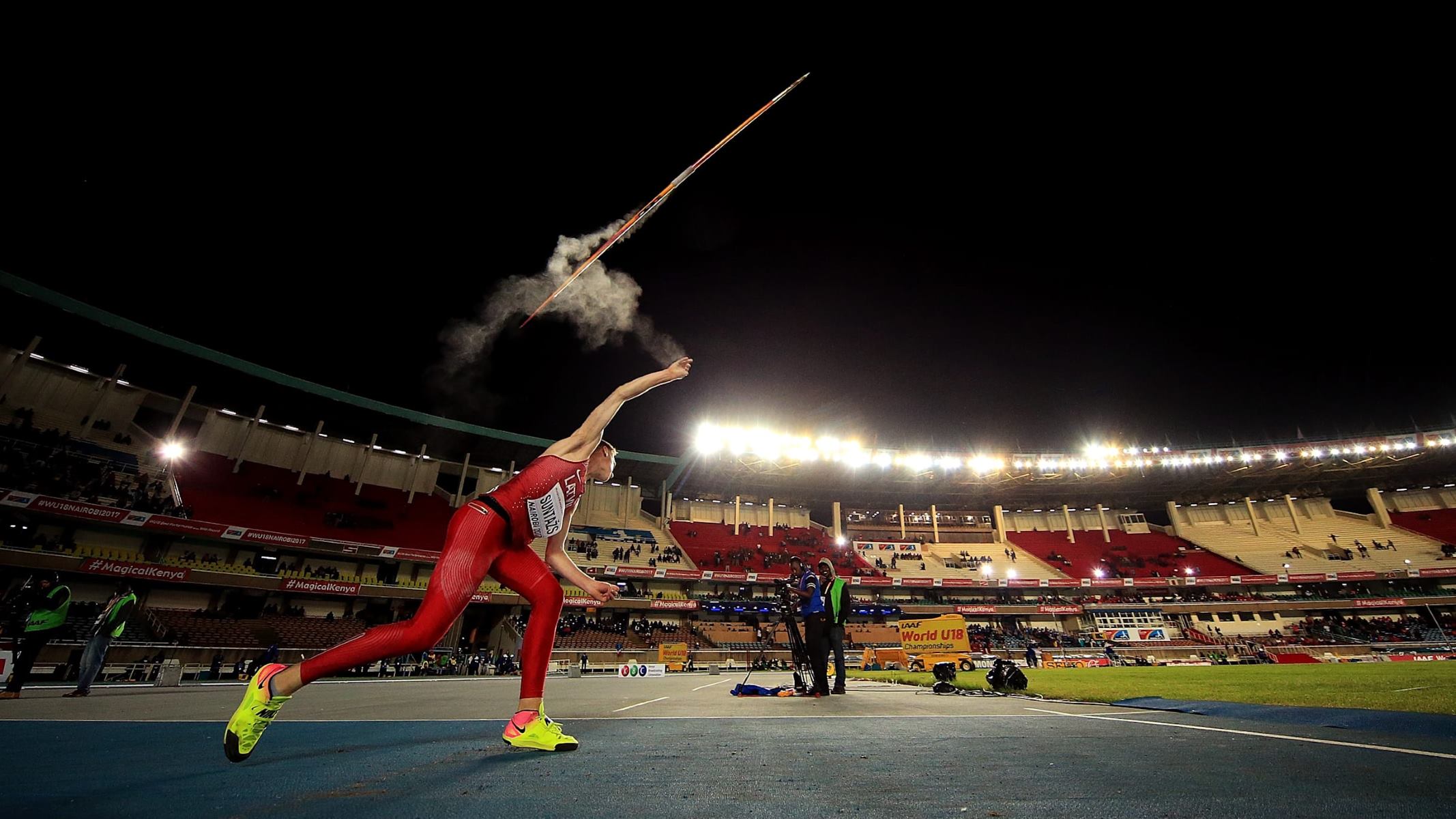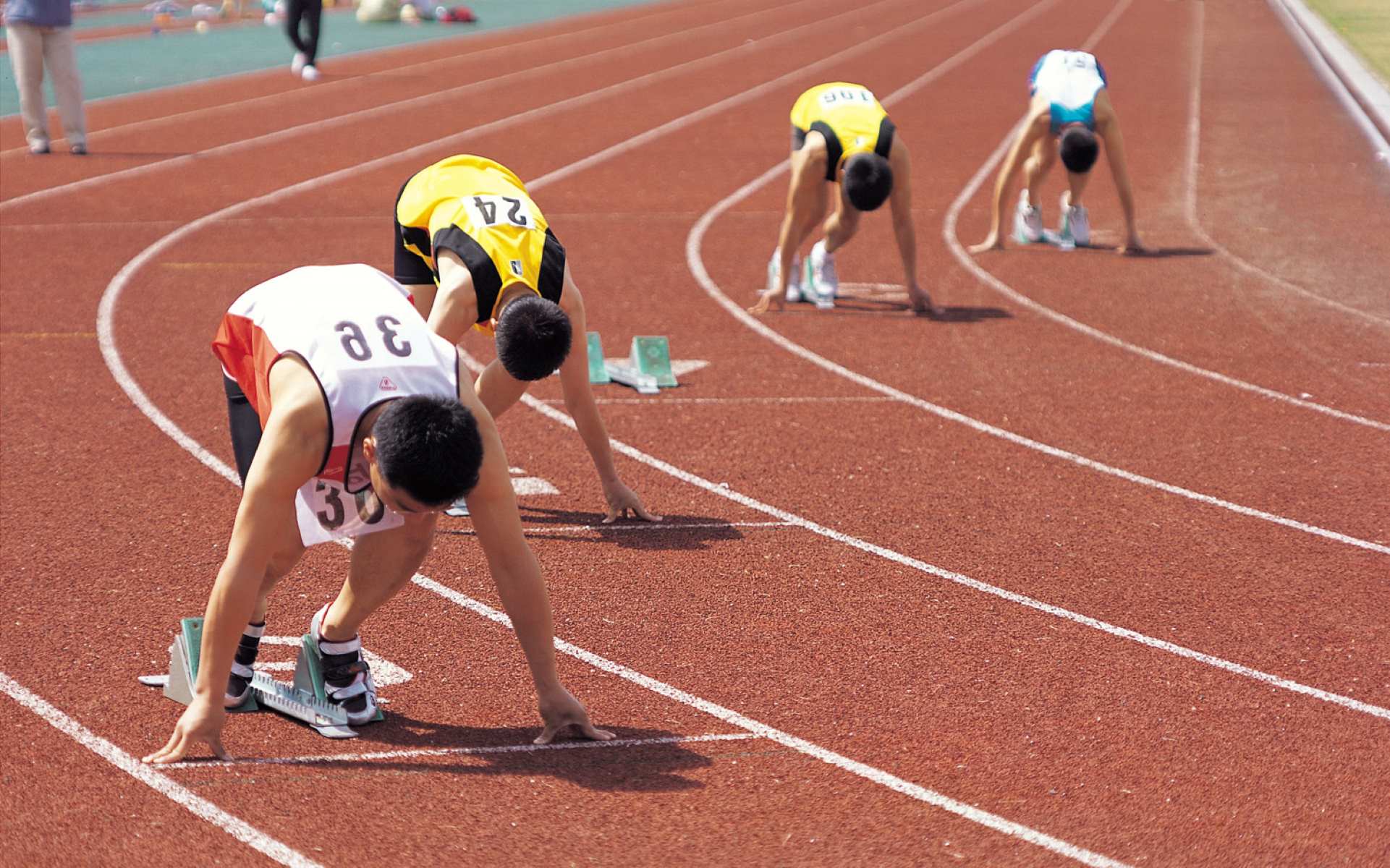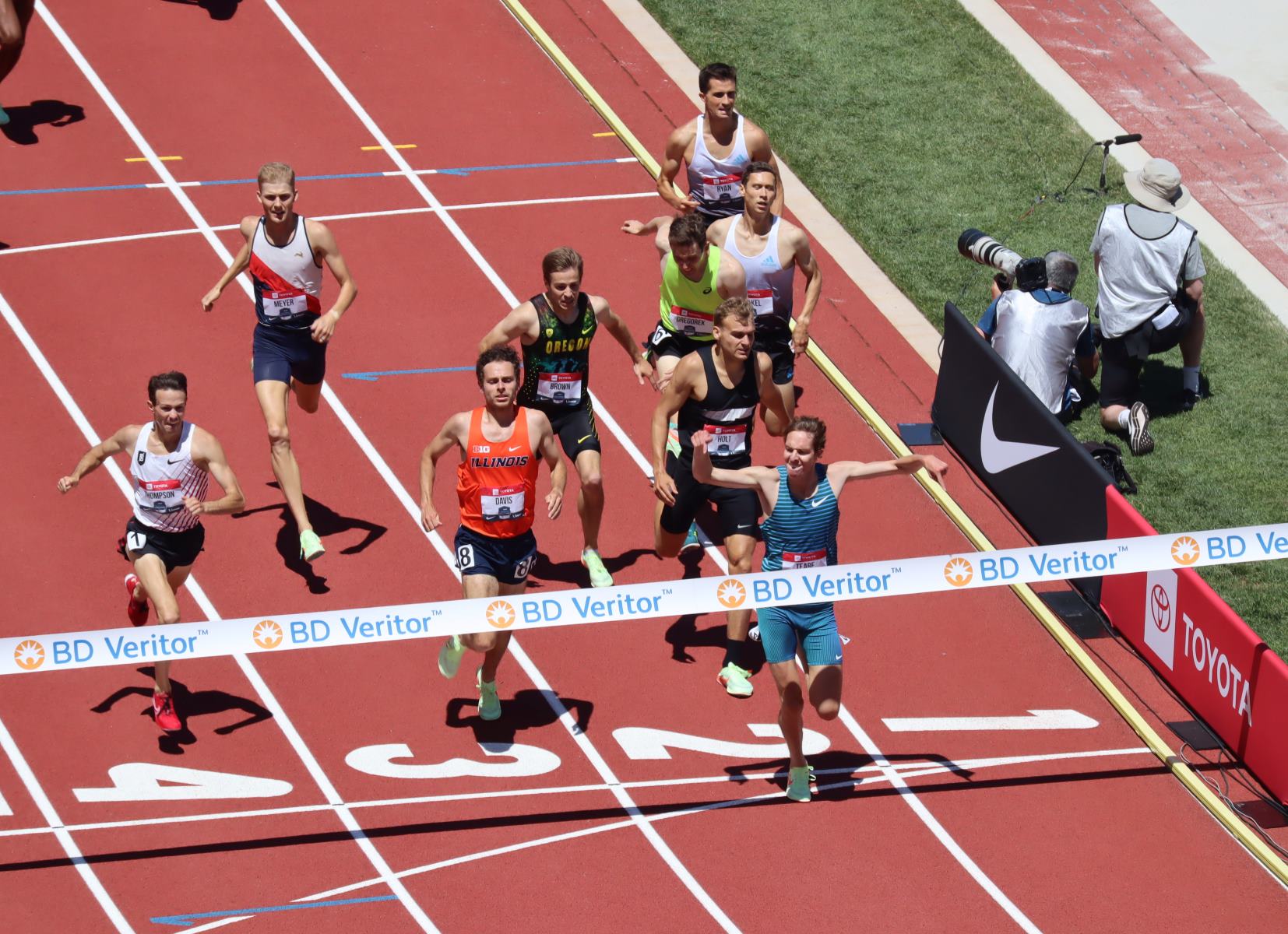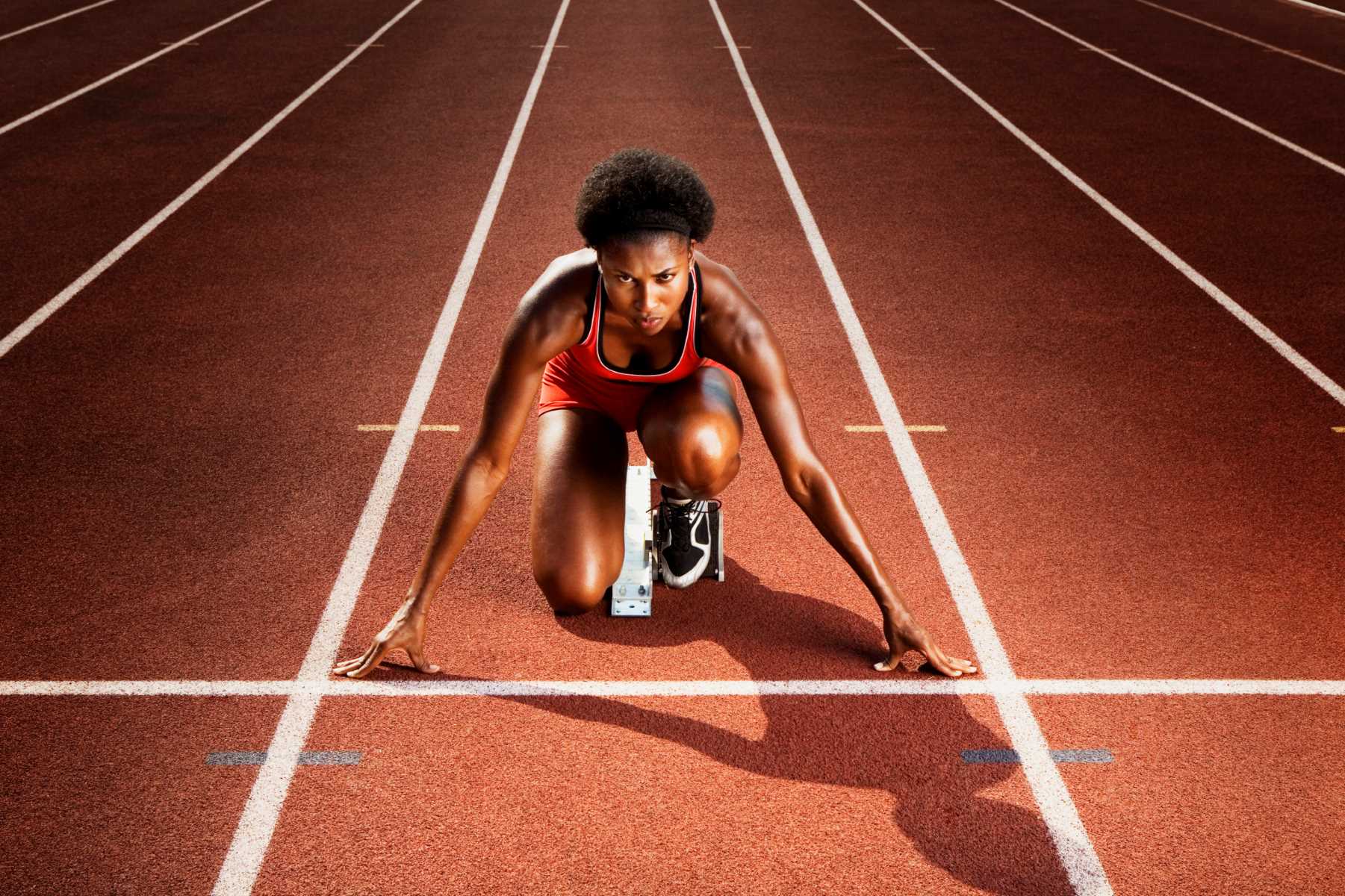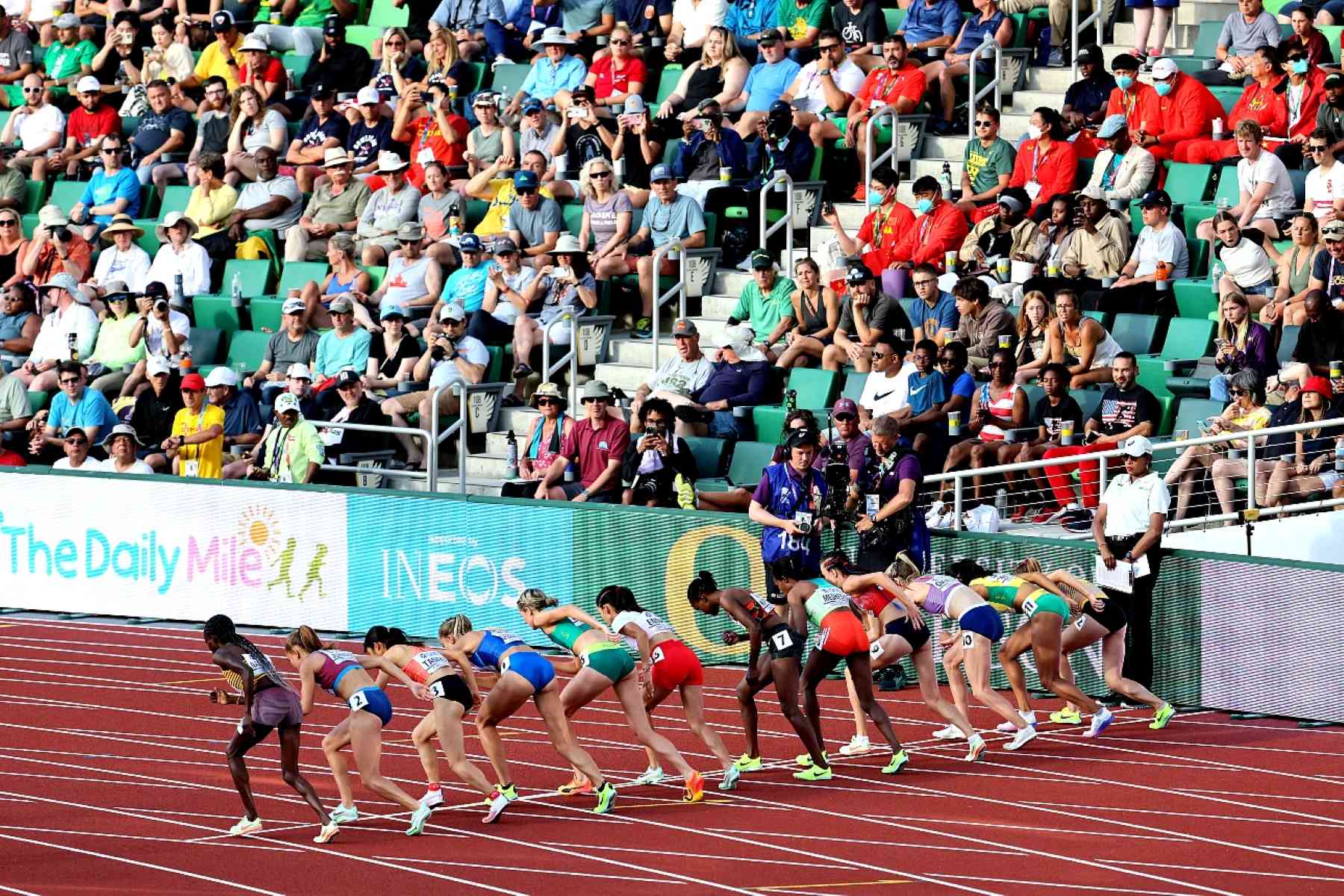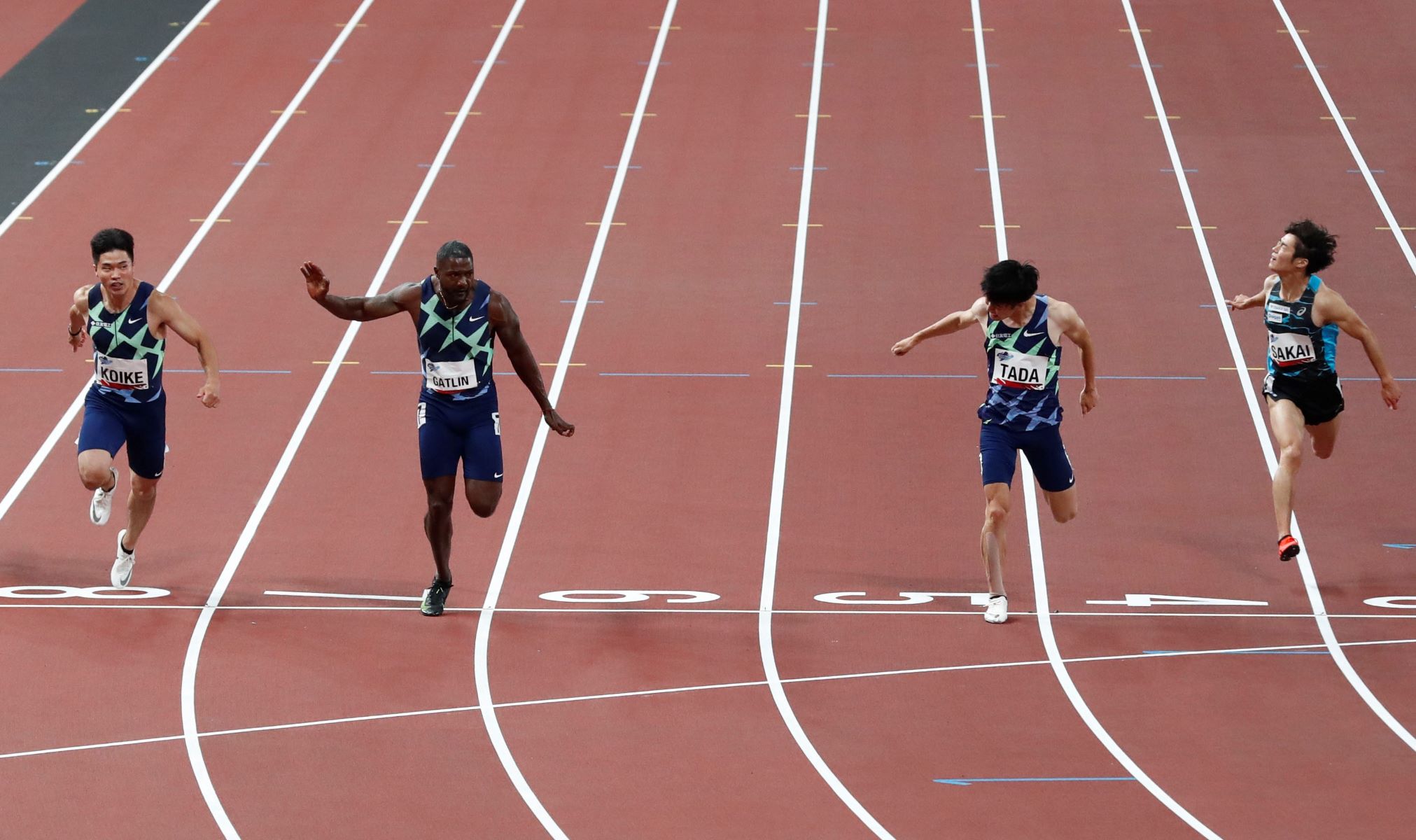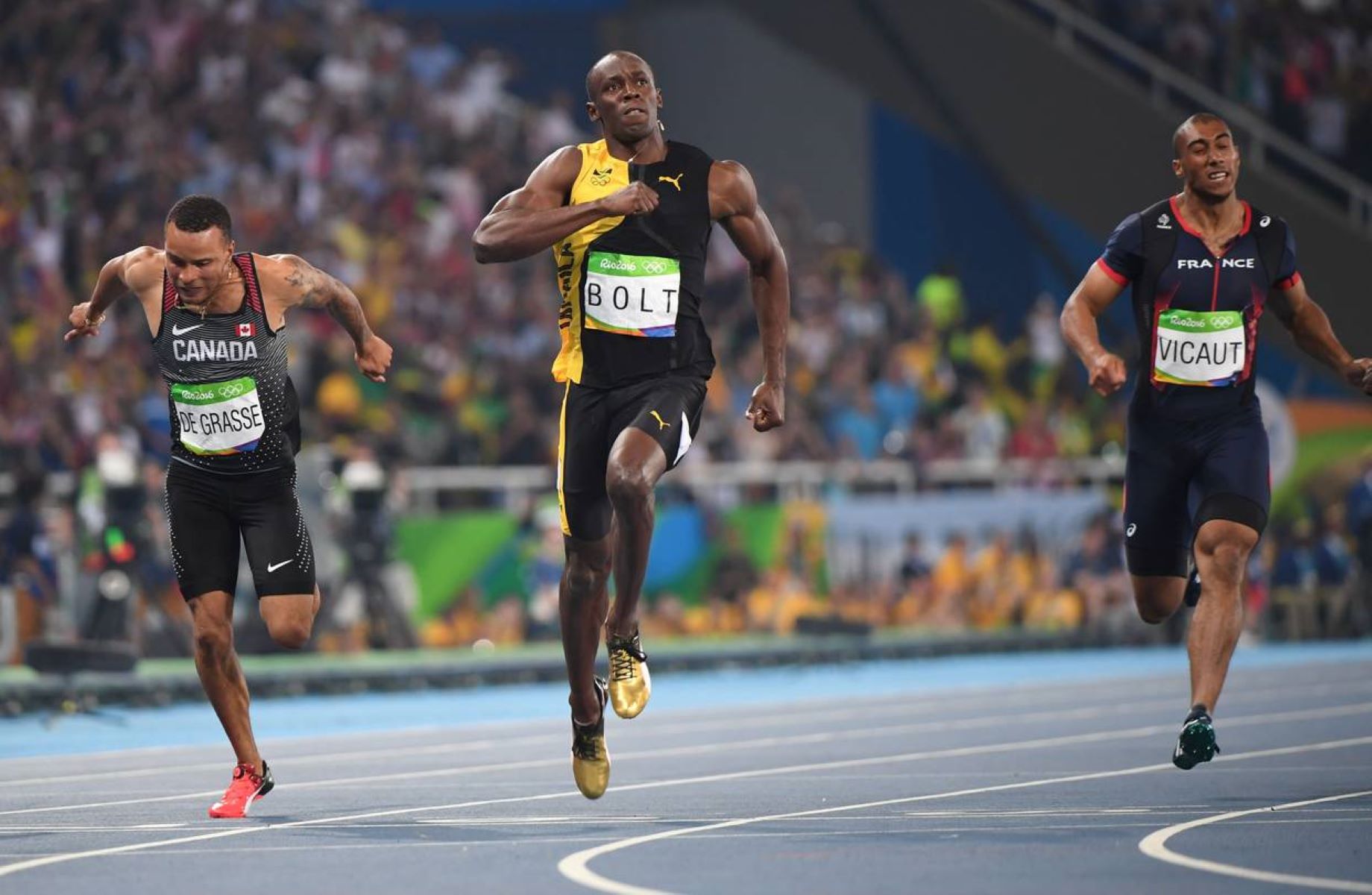Home>Misc>Featured>When Does Track And Field Olympic Trials Start
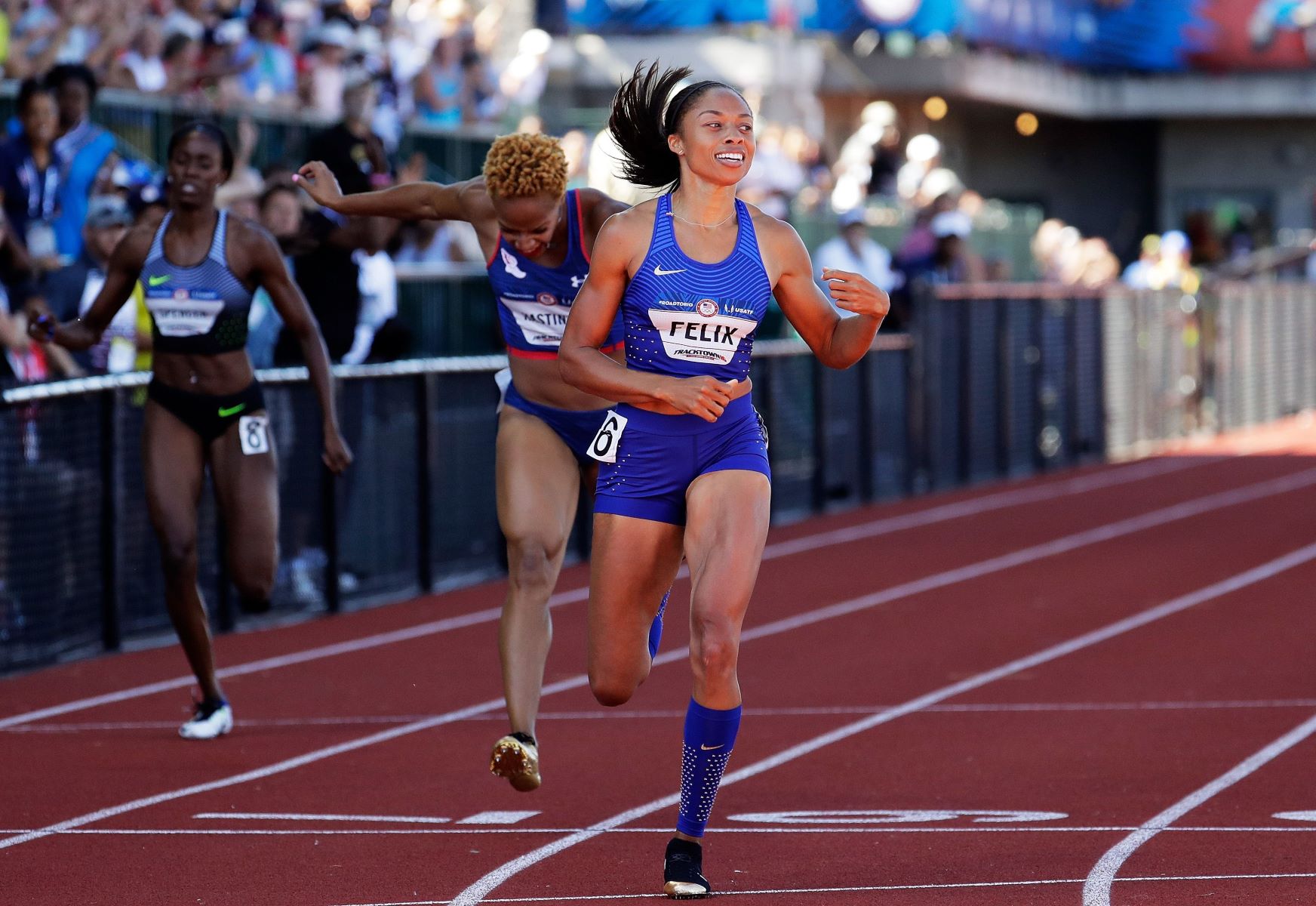

Featured
When Does Track And Field Olympic Trials Start
Published: September 4, 2023
Don't miss the featured event at the Track and Field Olympic Trials! Find out when it starts and witness top athletes compete for a spot on the Olympic team.
Introduction
The Olympic Games are the pinnacle of sporting excellence, showcasing the world’s most talented athletes competing on a global stage. One of the most exciting and fiercely contested events in the Olympics is track and field. In order to select the best athletes to represent their respective countries, every nation must hold Olympic Trials, which serve as a highly anticipated and prestigious event.
The Track and Field Olympic Trials are a series of competitions that aim to identify the athletes who will make it to the Olympic Games. The Trials not only determine the national team but also create an electrifying atmosphere filled with anticipation and fervor. Athletes display their skills, determination, and grit as they compete for the coveted opportunity to represent their country on the world stage.
Track and Field Olympic Trials consist of multiple events such as sprints, distance running, hurdles, relays, jumping, and throwing disciplines. It is a thrilling spectacle that showcases the sheer speed, strength, and agility of the participating athletes. The Trials bring together athletes from various backgrounds, each with their own unique story and journey to reach this pinnacle of their athletic careers.
The Olympic Trials serve as a means to identify and select the most competitive and skilled athletes to represent their nations at the Olympic Games. It is a structure that ensures only the best and most deserving athletes get the opportunity to compete on the grandest stage of them all.
Not only is the Track and Field Olympic Trials a platform for athletes to prove themselves, but it is also a source of inspiration for millions of aspiring athletes and sports enthusiasts around the world. It showcases the dedication, hard work, and perseverance that goes into achieving excellence in track and field.
This article dives into the details of the Track and Field Olympic Trials, exploring the qualification requirements, schedule of events, notable athletes participating, television and streaming coverage, and the overall importance of these trials in shaping the Olympic Games.
Overview of Track and Field Olympic Trials
The Track and Field Olympic Trials are an integral part of the Olympic selection process for countries around the world. It is a fiercely competitive event that determines which athletes will have the honor of representing their nation at the Olympic Games. The Trials consist of a series of qualifying events in various track and field disciplines, including sprints, distance running, hurdles, relays, jumping, and throwing.
Every country has its own set of qualification requirements and standards that athletes must meet to participate in the Track and Field Olympic Trials. These requirements often include achieving specific performance marks or times in designated events. Athletes must undergo a rigorous qualification process leading up to the Trials, which ensures that only the most talented athletes compete for a spot on the national team.
Once the qualification process is complete, the Track and Field Olympic Trials take place over several days, typically spanning a week or two. The trials are held at a designated venue and attract a large audience of sports enthusiasts, supporters, and media personnel.
The competition format of the Trials varies depending on the event. In some cases, athletes compete head-to-head in single races or rounds, while in others, they accumulate points based on individual performances. The Trials are designed to simulate the intensity and pressure of the Olympic Games, pushing athletes to their limits as they strive to secure their spot on the national team.
One of the highlights of the Track and Field Olympic Trials is the fierce competition among athletes. Witnessing the world’s top athletes battling it out in their respective disciplines is a breathtaking experience. Whether it’s witnessing record-breaking sprints, awe-inspiring jumps, or jaw-dropping throws, the Trials never fail to deliver moments of sheer athleticism and sportsmanship.
Television networks and streaming platforms provide extensive coverage of the Track and Field Olympic Trials, allowing viewers around the world to witness the excitement and drama unfold. The ability to watch these trials from the comfort of their homes ensures that fans do not miss a single moment of the action.
The Track and Field Olympic Trials hold immense significance in the sporting world. They serve as a platform for athletes to showcase their skills, prove their worth, and secure their place on the national team. These trials also generate immense excitement and anticipation among sports fans, as they eagerly follow their favorite athletes’ journey to Olympic glory.
In the next sections, we will delve deeper into the qualification requirements, schedule of events, notable athletes participating, and the importance of the Track and Field Olympic Trials in shaping the Olympic Games.
Qualification Requirements
The qualification requirements for the Track and Field Olympic Trials vary from country to country. Each nation sets its own standards and criteria that athletes must meet in order to be eligible for the Trials. These requirements ensure that only the most competitive and skilled athletes have the opportunity to compete for a spot on the national team.
Typically, the qualification process involves achieving specific performance benchmarks in designated events. These benchmarks may be based on timing, distances, heights, or other measurable metrics. Athletes must meet or exceed these standards within a specified timeframe leading up to the Trials in order to be considered for selection.
In addition to performance benchmarks, there may be other requirements that athletes must meet, such as citizenship, age restrictions, or membership in a national athletic association. The goal of these requirements is to ensure that the athletes representing a country have a strong affiliation and commitment to that nation.
The qualification period for the Track and Field Olympic Trials usually spans over a period of time leading up to the event. Athletes have to compete in authorized competitions and achieve the necessary results during this designated period. This helps ensure that athletes are in peak form and have demonstrated consistent performance in the months leading up to the Trials.
The qualification requirements are designed to be challenging and competitive, pushing athletes to strive for excellence in their respective disciplines. They not only serve as a means to select the best athletes for the national team but also act as a motivator for athletes to continually improve and reach new heights in their athletic careers.
It is important to note that even if an athlete meets the qualification requirements, it does not guarantee their inclusion in the national team. The Trials themselves are highly competitive, and athletes must perform exceptionally well in order to secure their spot. The Trials serve as the ultimate test for athletes, challenging them to rise above their competitors and prove their worth.
Overall, the qualification requirements for the Track and Field Olympic Trials are stringent and demanding. Athletes must meet specific performance benchmarks and fulfill other eligibility criteria to be considered for participation. These requirements ensure that the athletes representing their country are of the highest caliber and have earned their place through skill, dedication, and hard work.
In the next section, we will explore the schedule of events for the Track and Field Olympic Trials.
Schedule of Events
The Track and Field Olympic Trials are spread across several days, with each day featuring a lineup of events in various disciplines. The schedule is carefully planned to accommodate the different track and field events while ensuring a fair and balanced competition for all athletes.
The schedule of events for the Track and Field Olympic Trials is typically organized in a way that allows athletes to compete in multiple events, as long as they meet the qualification criteria for each event. This gives athletes the opportunity to showcase their versatility and compete in their strongest disciplines.
The trials generally begin with preliminary rounds, where athletes compete to qualify for the subsequent stages of the competition. These rounds may include heats, semifinals, or qualifying rounds, depending on the nature of the events.
As the trials progress, the focus shifts towards the finals, where the top performers from the preliminary rounds compete head-to-head for a spot on the national team. The finals are typically the most anticipated and intense part of the trials, as athletes give it their all to secure their place in the Olympic Games.
The events during the Track and Field Olympic Trials include sprints, middle-distance running, long-distance running, hurdles, relays, jumping disciplines (such as long jump, high jump, and pole vault), and throwing disciplines (such as shot put, discus throw, javelin throw, and hammer throw). Each event has its own specific day and time slot on the schedule.
It is important for athletes and spectators to stay up-to-date with the schedule of events to ensure they don’t miss any key competitions. Broadcasting networks and official Olympic websites provide detailed schedules so that viewers can plan their viewing accordingly.
The schedule of events for the Track and Field Olympic Trials is meticulously crafted to create an exciting and engaging experience for athletes and spectators alike. It allows for the efficient running of the trials while providing ample opportunities for athletes to showcase their skills in multiple events. It also brings together diverse disciplines, ensuring a well-rounded representation of track and field sports.
In the next section, we will explore the venue and location where the Track and Field Olympic Trials take place.
Venue and Location
The Track and Field Olympic Trials are held at a designated venue that meets the necessary requirements to accommodate the various events and provide a world-class experience for athletes and spectators. The choice of venue is crucial in ensuring the success of the trials and creating a memorable atmosphere for all involved.
The selection of the venue for the Track and Field Olympic Trials is based on several factors. The venue must have state-of-the-art facilities, including tracks, jumping pits, throwing areas, and spectator stands. It should meet international standards and regulations, ensuring a fair and safe competition environment for the athletes.
The location of the venue is also important. It should ideally be accessible to athletes, officials, and spectators, ensuring ease of travel and convenience. Additionally, the venue should have sufficient accommodation options, dining facilities, and amenities to cater to the needs of participants and attendees.
The Track and Field Olympic Trials are often held in well-known stadiums or sports complexes that have a rich history and significance in the world of track and field. These venues have witnessed iconic sporting moments and have the infrastructure and capacity to handle large crowds and media coverage.
The location of the venue can vary between countries and even within different cities for each edition of the Olympic Trials. This allows for the event to be hosted in various regions, giving different communities the opportunity to witness and participate in the trials.
Hosting the Track and Field Olympic Trials in different locations also helps generate a sense of excitement and anticipation among local communities. It allows them to celebrate and support their nation’s athletes in a setting close to home, creating a sense of unity and pride.
The venue and location of the Track and Field Olympic Trials play a significant role in enhancing the overall experience of the event. It sets the stage for outstanding performances, thrilling competitions, and memorable moments that will be etched in the minds of athletes and spectators for years to come.
In the next section, we will explore the opening ceremony of the Track and Field Olympic Trials.
Opening Ceremony
The opening ceremony of the Track and Field Olympic Trials is a grand and symbolic event that marks the official beginning of the trials. It sets the tone for the competition and creates an atmosphere of excitement and anticipation among athletes, officials, and spectators.
The opening ceremony is a celebration of the spirit of unity and camaraderie among athletes from different backgrounds and nations. It is a moment where athletes come together to showcase their national pride and represent their countries with honor.
The ceremony often includes a procession of athletes, where each participant enters the venue carrying their national flag. This procession is a powerful visual representation of the diversity and global reach of the competition. Athletes proudly adorn their national attire, with smiles and determination on their faces.
During the opening ceremony, speeches are given by officials and dignitaries, highlighting the significance of the trials and the values of sportsmanship, fair play, and determination. This moment allows athletes to reflect on the journey that brought them to the trials and inspires them to give their best throughout the competition.
In addition to speeches, the opening ceremony may feature cultural performances, music, and dance that reflect the host country’s heritage and traditions. It adds a touch of artistry and entertainment to the occasion, celebrating the cultural diversity and richness of the participating nations.
The opening ceremony is also an opportunity for spectators to feel the energy and excitement that surrounds the Track and Field Olympic Trials. It is a chance for fans to come together and show their support for the athletes, creating an electrifying atmosphere from the very beginning.
With vibrant displays of lights, music, and color, the opening ceremony serves as a visually stunning spectacle that captivates the audience. It is a moment that ignites passion and enthusiasm, leaving a lasting impression on all those in attendance.
The opening ceremony of the Track and Field Olympic Trials marks the beginning of a thrilling journey for the athletes and sets the stage for exceptional performances, record-breaking achievements, and unforgettable moments. It encompasses the spirit of the Olympic Games, bringing together athletes from around the world in a celebration of their talents and the universal language of sports.
In the next section, we will explore the competition format of the Track and Field Olympic Trials.
Competition Format
The Track and Field Olympic Trials feature a dynamic and diverse competition format that showcases the incredible skills and abilities of the participating athletes. The format varies depending on the specific events, but it is designed to provide a fair and competitive platform for athletes to demonstrate their prowess.
In the sprint events, such as the 100m, 200m, and 400m, athletes compete in multiple rounds, starting with heats or qualifying races. The top athletes from each round advance to the next stage, with the fastest runners ultimately qualifying for the finals. In the finals, the athletes give their all in a head-to-head battle, aiming to secure their place on the national team.
The distance running events, like the 1500m, 5000m, and 10,000m, also follow a similar format, with preliminary rounds and finals. However, these events involve more strategic pacing and endurance, as athletes need to maintain a consistent pace over longer distances to secure their spot in the finals.
Hurdles events add an additional layer of complexity to the competition format. Athletes must conquer a series of hurdles while maintaining their speed and technique. The format typically consists of heats, semifinals, and finals, with the fastest and most skilled hurdlers advancing through each round.
Relays are another thrilling aspect of the Track and Field Olympic Trials. Teams of athletes work together to pass the baton in a fast and seamless manner. The competition format involves preliminary rounds to determine the fastest teams, with the top-performing teams advancing to the finals.
Jumping disciplines, including long jump, high jump, and pole vault, have their own unique competition format. Athletes have multiple attempts to clear a designated height or distance, with the highest or longest successful jump determining the winners. The competition format ensures that athletes have sufficient opportunities to showcase their skills and compete for the top positions.
Throwing disciplines, such as shot put, discus throw, javelin throw, and hammer throw, also have specific competition formats. Athletes have a series of throws, and the best distance or point accumulation determines the winners. The format accommodates multiple attempts for athletes to deliver their best performances and secure their place on the national team.
The competition format of the Track and Field Olympic Trials is designed to showcase the athletes’ abilities while ensuring fairness and competitiveness. The format allows for exciting head-to-head battles, record-breaking performances, and moments of sheer athleticism that captivate the audience.
In the next section, we will explore some of the notable athletes participating in the Track and Field Olympic Trials.
Notable Athletes Participating
The Track and Field Olympic Trials attract some of the world’s most talented athletes, each vying for a chance to represent their country at the Olympic Games. These athletes have dedicated their lives to their respective disciplines and have achieved remarkable feats in the world of track and field.
One of the notable athletes participating in the Track and Field Olympic Trials is Usain Bolt. The Jamaican sprinter has set numerous world records and is widely considered one of the greatest sprinters of all time. His electrifying speed and charismatic personality have made him a fan favorite and a global sports icon.
Another standout athlete is Allyson Felix from the United States. Felix is a versatile sprinter and has won multiple Olympic medals throughout her career. Her determination, resilience, and consistency have earned her admiration from fans and fellow athletes alike.
In the field events, Renaud Lavillenie of France is a name to watch. He is a pole vaulter known for his soaring heights and incredible technique. Lavillenie has broken records and captivated audiences with his impressive performances.
On the women’s side, the heptathlete Nafi Thiam from Belgium is a rising star. Thiam excels in multiple track and field events, demonstrating her versatility and athleticism. She became an Olympic champion in 2016 and has continued to dominate in her discipline.
Other notable athletes participating in the Track and Field Olympic Trials include Noah Lyles and Sha’Carri Richardson from the United States, Dina Asher-Smith from Great Britain, Elaine Thompson-Herah from Jamaica, and Sandra Perkovic from Croatia, among many others.
These athletes, and many more, bring their talent, determination, and competitive spirit to the Track and Field Olympic Trials. They inspire millions of people around the world with their incredible performances and serve as role models for aspiring track and field athletes.
The presence of these notable athletes adds a layer of excitement and anticipation to the trials. Spectators eagerly follow their favorite athletes’ journey, rooting for them as they strive for excellence and aim to secure a spot on the national team.
The Track and Field Olympic Trials provide a stage for these notable athletes to showcase their skills and compete against the best in their disciplines. It is a testament to their hard work, dedication, and relentless pursuit of sporting greatness.
In the next section, we will explore the television and streaming coverage of the Track and Field Olympic Trials, allowing fans from around the world to follow these remarkable athletes’ journeys.
Television and Streaming Coverage
The Track and Field Olympic Trials receive extensive television and streaming coverage, allowing fans from around the world to witness the thrilling competitions and cheer for their favorite athletes. The coverage ensures that no one misses out on the excitement and drama of the trials, regardless of their geographical location.
Many television networks provide live coverage of the Track and Field Olympic Trials, broadcasting the events to millions of viewers. These networks, including major sports channels and national broadcasters, allocate dedicated airtime to showcase the trials and capture every breathtaking moment.
In addition to traditional television coverage, live streaming platforms play a significant role in bringing the trials to fans worldwide. Online platforms provide convenient access to the trials, allowing viewers to stream the events from their computers, smartphones, or other digital devices.
Official Olympic websites often offer comprehensive coverage of the Track and Field Olympic Trials, providing live streaming options, highlights, interviews, and behind-the-scenes content. This allows fans to engage with the trials and stay connected to their favorite athletes throughout the competition.
Social media platforms also play a pivotal role in the coverage of the trials. Athletes, journalists, and fans share updates, videos, and photographs on platforms such as Instagram, Twitter, and Facebook, providing a real-time and interactive experience for those unable to watch the events live.
The television and streaming coverage of the Track and Field Olympic Trials not only allows fans to witness the electrifying performances but also provides valuable exposure and recognition for athletes participating in the trials. It gives them a global platform to showcase their skills and attract sponsors, fans, and media attention.
The coverage also serves as an inspiration for aspiring athletes and sports enthusiasts. It allows them to witness the hard work and dedication required to excel in the world of track and field, motivating them to pursue their own athletic dreams.
Overall, the television and streaming coverage of the Track and Field Olympic Trials ensures that the excitement and drama of the competition reach a global audience. It brings fans closer to the trials, allows them to engage with the athletes, and creates an unforgettable viewing experience.
In the next section, we will explore the importance of the Track and Field Olympic Trials in shaping the Olympic Games.
Importance of Olympic Trials
The Track and Field Olympic Trials hold immense significance in the world of sports, and they play a crucial role in shaping the Olympic Games. Here are some key reasons why the Olympic Trials are so important:
1. Selection of the best athletes: The Olympic Trials ensure that only the most talented and deserving athletes go on to represent their countries at the Olympic Games. By setting rigorous qualification standards and organizing competitive trials, the selection process ensures that the national team comprises the best athletes in their respective disciplines.
2. Fair and competitive platform: The Trials provide a fair and competitive platform for athletes to showcase their skills and compete against their peers. The format of the trials simulates the intensity and pressure of the Olympic Games, pushing athletes to elevate their performances and deliver their best under the spotlight.
3. Inspiration for aspiring athletes: The Olympic Trials inspire millions of aspiring athletes around the world. Watching elite athletes compete and demonstrate their dedication, discipline, and unwavering spirit motivates young athletes to pursue their own athletic dreams and strive for excellence in their chosen sports.
4. Development of national sporting talent: The Olympic Trials play a vital role in the identification and development of national sporting talent. Athletes who participate in the trials benefit from the experience, exposure, and high-level competition, which helps them grow and improve their performance.
5. Celebration of sportsmanship and unity: The Trials bring athletes from different backgrounds and nations together, fostering a sense of sportsmanship, unity, and camaraderie. Athletes compete against each other, but they also celebrate each other’s achievements and demonstrate mutual respect, creating a true spirit of Olympism.
6. Preparation for the Olympic Games: The intensity and pressure of the Olympic Trials prepare athletes mentally and physically for the Olympic Games. The Trials provide a valuable opportunity for athletes to fine-tune their skills, test their abilities, and gain valuable experience competing against top athletes.
7. Showcasing the sport: The Olympic Trials bring track and field sports into the spotlight, capturing the attention of sports fans around the world. The trials serve as a showcase for the beauty, athleticism, and excitement of track and field disciplines, generating interest in the sport and attracting new fans.
The Track and Field Olympic Trials serve as a critical step in the Olympic journey, providing a platform for athletes to prove themselves, compete at the highest level, and earn their place among the world’s best. They not only shape the composition of national teams but also inspire, entertain, and unite people through the power of sports.
In the next section, we will provide a concluding summary of the importance of the Track and Field Olympic Trials.
Conclusion
The Track and Field Olympic Trials are a culmination of hard work, dedication, and talent, as athletes from around the world compete for the opportunity to represent their countries at the Olympic Games. The trials hold immense importance in the world of sports, serving as a platform to select the best athletes, create memorable moments, and inspire millions of sports enthusiasts.
From the qualification requirements to the intense competition format, the trials provide a fair and competitive environment where athletes can showcase their skills in various track and field disciplines. The trials not only shape the national teams but also foster unity, sportsmanship, and a celebration of athletic excellence.
The trials are a captivating event, with notable athletes pushing their limits and captivating spectators with incredible performances. Television and streaming coverage ensure that fans from all corners of the world can witness the excitement and drama unfold in real time.
The Olympic Trials serve as a powerful source of inspiration for aspiring athletes, fostering dreams and encouraging individuals to pursue excellence in their chosen sports. The trials also contribute to the development of national sporting talent, providing a stepping stone towards achieving sporting greatness.
Furthermore, the Trials are an important milestone in an athlete’s Olympic journey, preparing them mentally and physically for the ultimate competition – the Olympic Games. The trials provide invaluable experience, exposure, and competition at the highest level, shaping athletes into true champions.
In summary, the Track and Field Olympic Trials are a pivotal moment in the world of track and field. They serve as a gateway to the Olympic Games, a celebration of athletic achievement, and a testament to determination and perseverance. The trials capture the spirit of Olympism, inspiring generations of athletes and fans alike.
